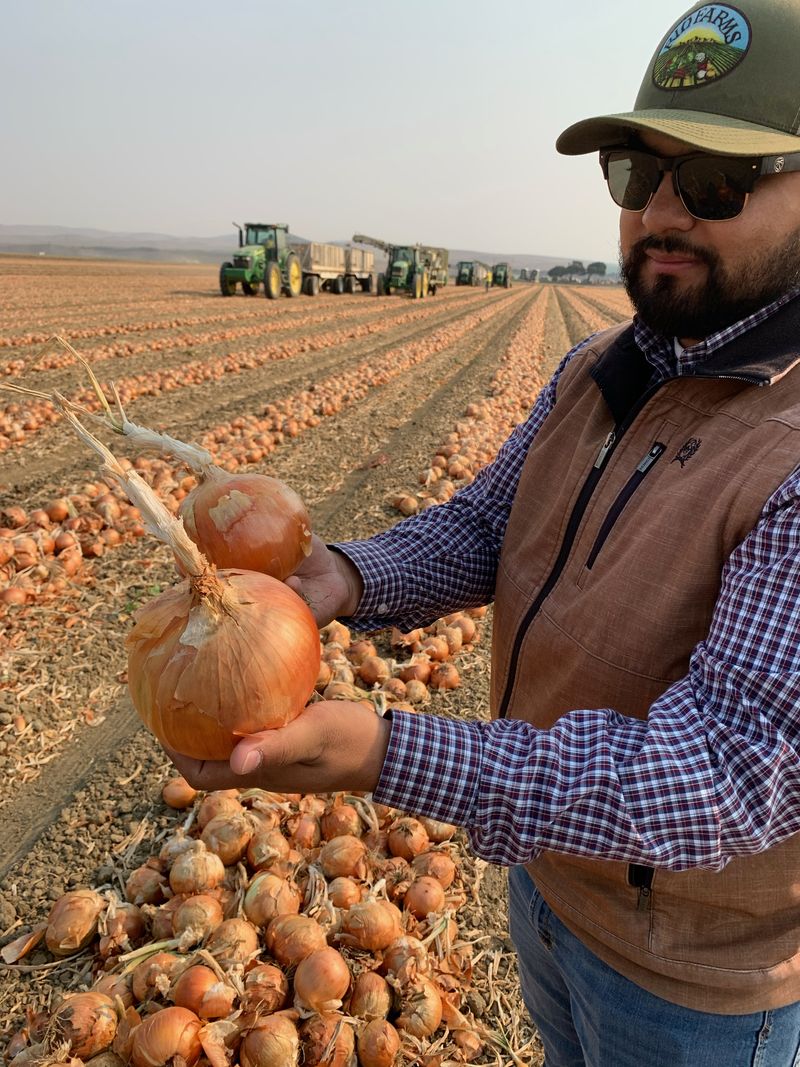When your recipe calls for an onion, there’s more that you need to know. Choosing the wrong color for the wrong recipe could make you end up with drastically different results than you planned for. So, how do you know which onion to reach for?
We’re breaking down the colors, flavors, and common uses of onions to help you make the most of your next recipe. You’ll also learn more about why the yellow onion ranks supreme when it comes to versatility and flexibility.
Understanding Onion Flavors and Uses
Three common colors of onions are red, white, and yellow – but make sure you know their distinct flavors and uses before you jump into trying a new recipe!
RED ONIONS
Flavor: A red onion is crisp and bright and has a mild taste compared to other onion types. Summer crops of red onions can have a sharp, spicy flavor that can bring a more significant presence to food.
Uses: The color of this onion makes it an excellent, bright garnish, and the flavor makes it a stand-out raw addition to salads or sandwiches. They can also be pickled, grilled, or roasted. It’s easy to see why red onions are growing in popularity!
Fun Fact: Red onions were so valuable in the Middle Ages that they were used as currency, and people even paid rent with them. This makes us wonder if we’re underestimating the red onion today…
WHITE ONIONS
Flavor: When sauteed, white onions become sweet and golden-colored. This is a standard first step in many recipes for a reason. Their flavor is clean and crisp, with a minimal aftertaste.
Uses: White onions have a subtle flavor that makes them delicious additions to salads, sauces, and almost any Mexican cuisine. Their mild flavor and crispy texture also make them great for salsa or topping burgers.
Fun Fact: White onions have compact cells, which means they have a shorter storage life than other onion types. When you buy them, make sure you have a plan!
YELLOW ONIONS
Flavor: These full-flavor, all-purpose onions are a popular staple for good reasons. When cooked, they develop a tangy and sweet taste, and their adaptability makes them a safe choice for many recipes.
Uses: Yellow onions are the top choice for caramelizing. They’re also great for grilling, sauteeing, or featuring in any onion-prominent recipe. Their flavor becomes more complex after cooking.
Fun Fact: About 87 percent of onion crops are dedicated to yellow onions. Did we mention yellow basically means all-star? One drawback, though, might be the high sulfur content — which is what makes you cry when you cut them.
Yellow and white onions are often assumed to be interchangeable, but keep these key flavor and use differences in mind!
Yellow Onions: Top Spot in Top Kitchens
Yellow onions are the most popular cooking onion and the safest choice in most recipes. Thus, they are the most widely sold type of onion and the one you’ll likely reach for most often. Their versatility makes them a great kitchen staple.
When choosing a yellow onion at the store, it’s best to look for these traits:
- Firm Texture. A soft onion is past its prime, so feel for firmness before making your pick.
- Dry Skin. Moisture will shorten an onion’s shelf life, so dry is best.
- Smooth Skin. Bumps or bruising means damage that will shorten the onion’s storage life.
- No Mold or Sprouts. Any sprouting or mold shows an onion is past its prime, and you should look for a younger onion.
Now that you know which color of onion to pick for your next creation and how to choose the best one, you’re ready to make something delicious!
Looking for more tips and tricks for all things onions? Check out How to Make Onions the Star of Your Meal! And connect with Gills Onions on Instagram for more behind-the-scenes looks.

